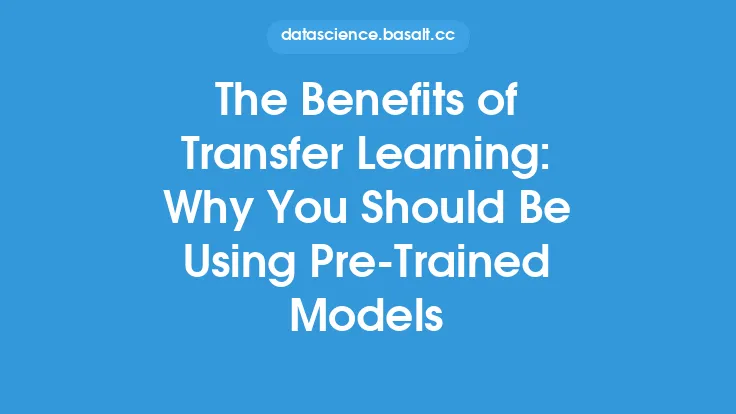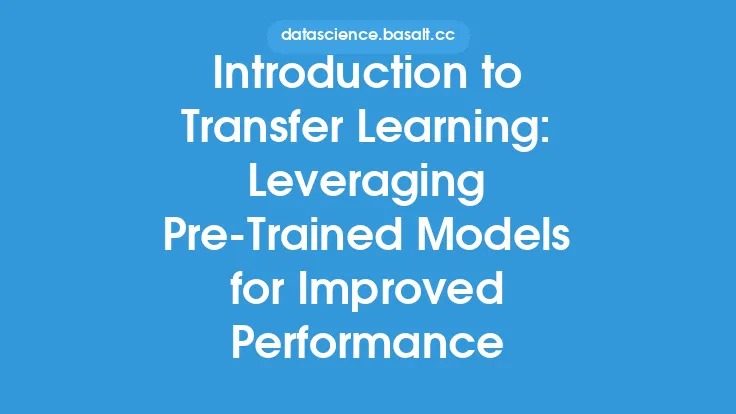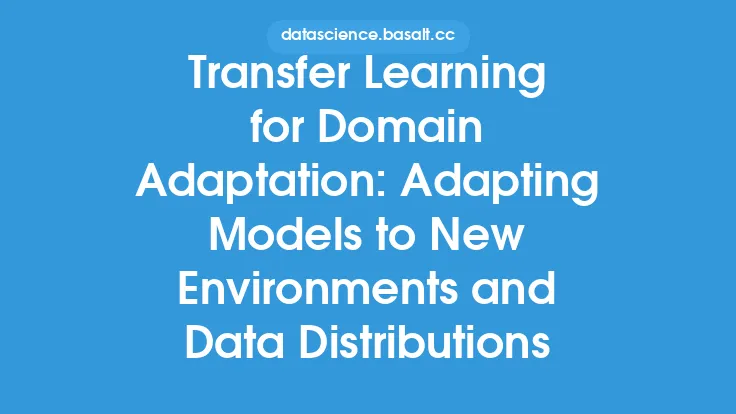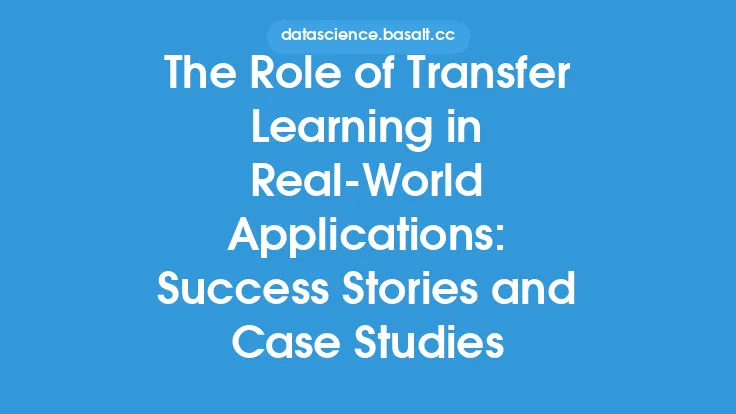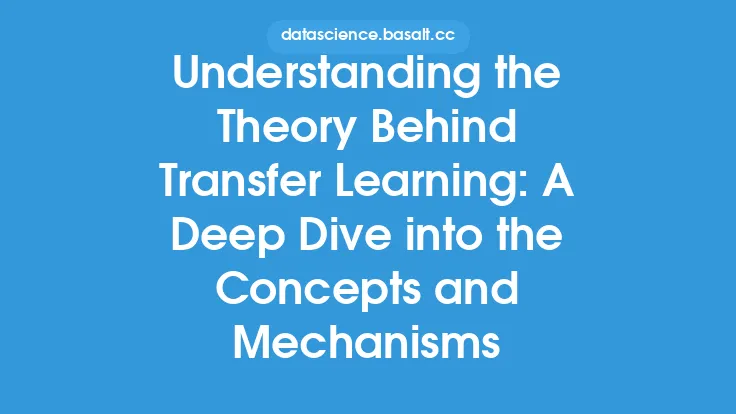The concept of transfer learning has revolutionized the field of machine learning, enabling developers to leverage pre-trained models to improve performance on new tasks. This approach has become increasingly popular in recent years, as it allows for significant reductions in training time and improvements in model accuracy. At its core, transfer learning involves using a model that has been pre-trained on a large dataset to perform a specific task, and then fine-tuning it to perform a different but related task. This can be particularly useful when working with smaller datasets or when trying to adapt a model to a new domain.
What is Transfer Learning?
Transfer learning is a machine learning technique that involves using a pre-trained model as a starting point for a new task. The pre-trained model has already learned to recognize certain features and patterns in the data, which can be useful for the new task. By fine-tuning the pre-trained model, developers can adapt it to the new task, rather than training a new model from scratch. This approach can be particularly useful when working with small datasets, as the pre-trained model can provide a good starting point for the new task.
Types of Transfer Learning
There are several types of transfer learning, including inductive transfer learning, transductive transfer learning, and unsupervised transfer learning. Inductive transfer learning involves using a pre-trained model to improve performance on a new task, by fine-tuning the model on the new dataset. Transductive transfer learning involves using a pre-trained model to improve performance on a new task, by fine-tuning the model on a small amount of labeled data from the new task. Unsupervised transfer learning involves using a pre-trained model to improve performance on a new task, without any labeled data.
How to Apply Pre-Trained Models to New Tasks
Applying pre-trained models to new tasks involves several steps. The first step is to select a pre-trained model that is relevant to the new task. This can involve searching for models that have been pre-trained on similar datasets or tasks. The next step is to fine-tune the pre-trained model on the new dataset. This can involve adding new layers to the model, or modifying the existing layers to better suit the new task. The final step is to evaluate the performance of the fine-tuned model on the new task, and to make any necessary adjustments.
Fine-Tuning Pre-Trained Models
Fine-tuning pre-trained models involves modifying the model to better suit the new task. This can involve adding new layers to the model, or modifying the existing layers to better suit the new task. There are several techniques that can be used to fine-tune pre-trained models, including weight decay, dropout, and learning rate scheduling. Weight decay involves adding a penalty term to the loss function to discourage large weights. Dropout involves randomly dropping out units during training to prevent overfitting. Learning rate scheduling involves adjusting the learning rate during training to improve convergence.
Pre-Trained Models for Computer Vision Tasks
Pre-trained models have been widely used for computer vision tasks, such as image classification, object detection, and segmentation. Models such as VGG16, ResNet50, and InceptionV3 have been pre-trained on large datasets such as ImageNet, and can be fine-tuned for specific tasks. For example, a pre-trained VGG16 model can be fine-tuned for image classification tasks, such as classifying images of dogs and cats. A pre-trained ResNet50 model can be fine-tuned for object detection tasks, such as detecting pedestrians in images.
Pre-Trained Models for Natural Language Processing Tasks
Pre-trained models have also been widely used for natural language processing tasks, such as text classification, sentiment analysis, and language translation. Models such as BERT, RoBERTa, and XLNet have been pre-trained on large datasets such as Wikipedia and BookCorpus, and can be fine-tuned for specific tasks. For example, a pre-trained BERT model can be fine-tuned for text classification tasks, such as classifying text as positive or negative. A pre-trained RoBERTa model can be fine-tuned for sentiment analysis tasks, such as analyzing the sentiment of customer reviews.
Challenges and Limitations of Transfer Learning
While transfer learning has many benefits, there are also several challenges and limitations to consider. One of the main challenges is selecting the right pre-trained model for the new task. This can involve searching for models that have been pre-trained on similar datasets or tasks. Another challenge is fine-tuning the pre-trained model, which can involve modifying the model architecture or adjusting the hyperparameters. There are also several limitations to transfer learning, including the risk of overfitting and the need for large amounts of labeled data.
Best Practices for Transfer Learning
There are several best practices to keep in mind when using transfer learning. The first is to select a pre-trained model that is relevant to the new task. The next is to fine-tune the pre-trained model carefully, using techniques such as weight decay and dropout to prevent overfitting. The final best practice is to evaluate the performance of the fine-tuned model carefully, using metrics such as accuracy and F1 score to measure performance.
Future Directions for Transfer Learning
Transfer learning is a rapidly evolving field, with many new developments and advancements on the horizon. One of the main future directions is the development of more efficient and effective fine-tuning techniques, such as few-shot learning and meta-learning. Another future direction is the application of transfer learning to new domains and tasks, such as robotics and healthcare. There is also a growing interest in the development of transfer learning techniques for multimodal data, such as images and text.
Conclusion
Transfer learning is a powerful technique that has revolutionized the field of machine learning. By leveraging pre-trained models, developers can improve performance on new tasks, reduce training time, and adapt models to new domains. While there are several challenges and limitations to consider, the benefits of transfer learning make it an essential tool for any machine learning practitioner. By following best practices and staying up-to-date with the latest developments, developers can unlock the full potential of transfer learning and achieve state-of-the-art results on a wide range of tasks.
